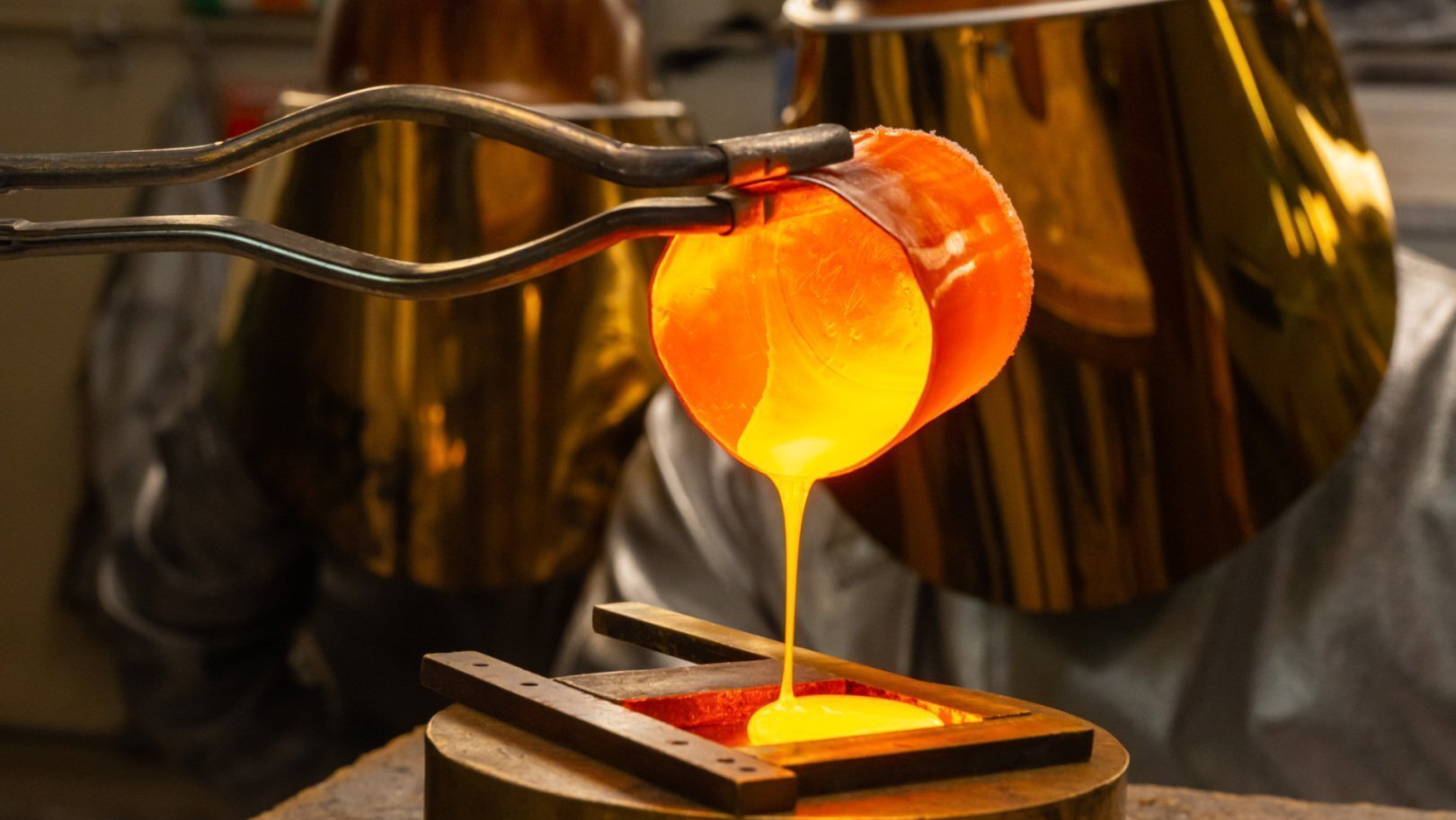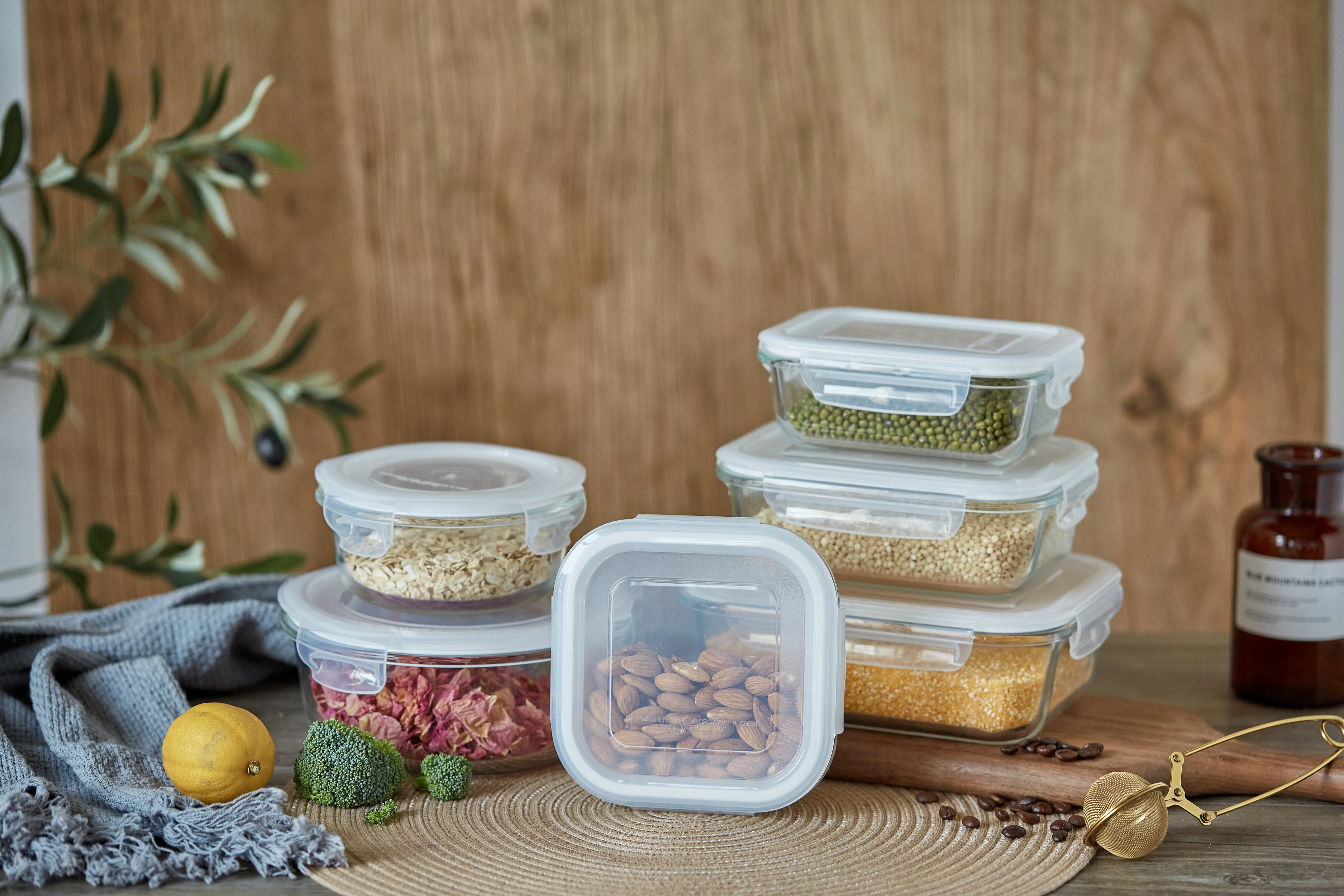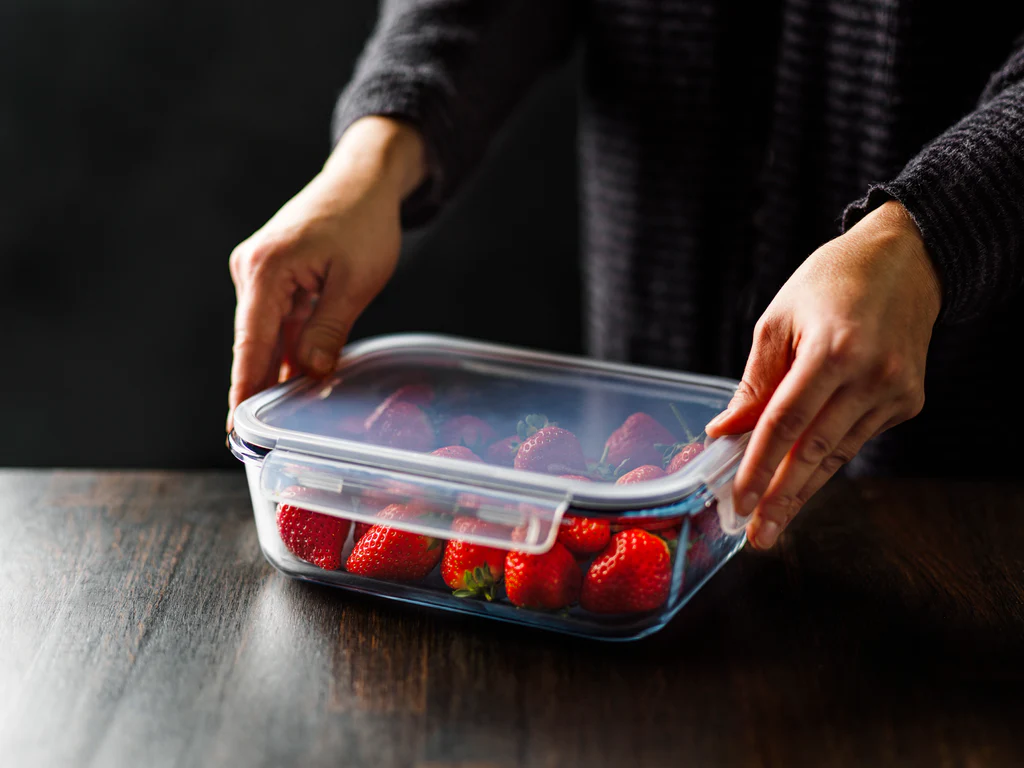When it comes to storing food, glass containers are often praised for their durability, non-porous surface, and eco-friendly reputation. Many people assume that all glass containers are automatically a safe choice for food storage—but is that really true? While glass is generally considered a safer alternative to plastic, not all glass containers are created equal. In this article, we’ll take a closer look at the different types of glass used in food containers, potential safety concerns, and what you should consider before using them for long-term storage.
Table of Contents
What Are Glass Containers Made Of?

The primary component in any glass container is silica (SiO₂), which typically makes up between 66% and 88% of the total material by weight. This silica is sourced from high-purity quartz sand—a natural and abundant material.
But making glass isn’t just about sand. Other key ingredients are added to improve both the manufacturing process and the final product’s qualities. For instance:
soda ash (sodium carbonate, Na₂CO₃) makes up about 7–15% of the mix. When heated, it becomes sodium oxide, which significantly lowers the melting point of silica and makes the glass easier to form.
Limestone (calcium carbonate, CaCO₃) is another essential ingredient, accounting for roughly 6–12% of the batch. It converts to calcium oxide during melting, improving the glass’s durability and resistance to chemicals. A smaller amount of alumina (Al₂O₃)—usually between 0.1% and 3.0%—is also included to enhance the overall stability and chemical resistance of the glass.
Additionally, minor ingredients like magnesium oxide (MgO) and potassium oxide (K₂O)—each often under 2%—are used to fine-tune certain properties such as strength and chemical behavior.
Component | Range by Weight (%) | Main Role |
|---|---|---|
SiO₂ | 72–74 | Forms the main structure |
Na₂O | 13–17.5 | Helps with melting and shaping |
CaO | 7.6–10 | Makes the glass more durable |
Al₂O₃ | 1.2–3 | Provides chemical stability |
MgO, K₂O | 0–2 | Adjusts glass traits |
Other oxides | <0.2 (TiO₂, Fe₂O₃, etc) | Controls color and other small detail |
A noteworthy part of modern glass production is the use of recycled materials, known as cullet. This recycled glass can account for anywhere from 25% to 60% of a new batch. Incorporating cullet isn’t just eco-friendly—it also reduces the energy required for melting and conserves raw materials.
Color is another aspect that can be tailored based on the container’s purpose. Tiny amounts of metal oxides—such as iron, selenium, or vanadium oxide (often less than 0.25%)—are introduced to achieve specific shades. The inherent purity of the sand also influences color; lower iron content, for example, results in clearer, “colorless” glass.
From a safety standpoint, it’s important to note that the silica in the final glass product is in an amorphous (non-crystalline) state. This means it doesn’t pose any risk related to silica dust. The precise combination of raw materials results in a stable, inert, and food-safe product that performs reliably in everyday use.

Which Glass Containers Are Food-Safe?
When choosing glass containers for storing food, it’s important to make sure they’re truly “food-grade.” This means the glass is designed to be non-reactive and safe for contact with food and beverages. There are three main types of food-grade glass, each with different properties and best uses.
Type I – Borosilicate Glass
Borosilicate glass is highly resistant to chemicals and thermal shock, making it one of the most durable options available. It contains significant amounts of boron oxide and alumina, which contribute to its stability. You’ll often find it in high-quality bakeware (like classic Pyrex), laboratory glassware, and premium food storage containers.
This type is ideal for all kinds of foods—including acidic or alkaline items—as it poses very low risk of leaching or altering flavor. It withstands sudden temperature changes well, so it’s generally safe for use in the oven, microwave, and dishwasher. For reference, borosilicate glass can handle thermal shifts of up to 165 °C (329 °F) and has exceptionally low sodium release rates—under 0.01 mg/L.
Type II – Treated Soda-Lime Glass
Type II glass is made from soda-lime glass that has been chemically treated, often with sulfur, to enhance its resistance to leaching. This surface treatment helps prevent minerals from migrating into food, especially when the container is exposed to moisture.
It’s commonly used for food and beverage jars, including some canning jars and reusable containers labeled as “treated” or “food-safe.” While safer than untreated soda-lime glass, it isn’t as robust as borosilicate. It’s best suited for acidic and neutral foods at room temperature—not recommended for hot liquids or oven use. Type II meets FDA food-contact standards and offers lower leaching rates than untreated versions.
Type III – Regular Soda-Lime GlassThis is the most common and economical type of food glass. It’s used in many commercial bottles, mason jars, and typical kitchen containers. While considered food-safe, it has moderate chemical resistance and is prone to cracking under rapid temperature changes.
Soda-lime glass is appropriate for cold drinks, dry goods, and pantry storage, but not ideal for hot or highly acidic foods. Under certain conditions, it may release trace amounts of sodium (up to around 0.2 mg/L). It remains a reliable option for cold or room-temperature applications.
Practical Tips for Choosing Food-Grade Glass
All three types are considered Generally Recognized As Safe (GRAS) by the FDA and comply with U.S. food safety regulations. To tell them apart, look for labeling such as “food-safe,” or check whether the product description specifies the glass type.
Here’s a quick guide:
Use borosilicate glass for heating, freezing, and storing acidic foods.
Type II treated glass is a good mid-tier option for everyday pantry storage at room temperature.
Type III soda-lime glass works well for cold storage or dry ingredients.
For most home cooks, borosilicate offers the most versatility and durability. Treated soda-lime provides a solid balance of safety and affordability, while standard soda-lime is best used for cooler temperatures. Always check labels to ensure you’re choosing a container that’s intended for food use.
At-a-Glance: Food-Grade Glass Types
Type | Chemical Resistance | Thermal Shock Resistance | Where To Use It | Avoid |
|---|---|---|---|---|
Type I Borosilicate | Excellent | Excellent | Cookware, premium storage, labs | Very strong acids (rare) |
Type II Treated | High (acid/neutral) | Moderate | Pantry/food jars, beverage bottles | Boiling/high-heat, strong alkalis |
Type III Soda-Lime | Moderate | Low | Standard jars, pantry, cold drinks | Hot/acidic foods, rapid temp shifts |
Does a Glass Container Have BPA?

If you’re concerned about BPA (Bisphenol A) in food storage, here’s good news: glass containers are completely free of BPA. Unlike some plastics, glass is made from all-natural materials such as sand, soda ash, limestone, and recycled glass—none of which involve synthetic chemicals like BPA. This makes glass a naturally non-toxic and reliable choice for food storage.
Why Glass Doesn’t Contain BPA
BPA is a chemical used in certain plastics and epoxy resins to add durability. It is not used anywhere in the glassmaking process. Glass is inert and stable, meaning it doesn’t react with food or drinks, and it won’t leach harmful chemicals—whether exposed to heat, cold, or acidic ingredients. In addition to being BPA-free, glass is also free from other chemicals like phthalates, lead, and plasticizers.
High-quality borosilicate glass—commonly used in oven-safe cookware and premium food containers—offers even greater resistance to thermal shock and chemical leaching. It can withstand temperatures as high as 165°C (329°F) without compromising its structure or safety.
A Quick Note on Lids and Seals
While the glass container itself is always BPA-free, it’s important to check the materials used for lids, seals, or liners. These parts are sometimes made from plastic or resin and could contain BPA unless otherwise stated. For full peace of mind, look for brands that label all components—including lids—as BPA-free.
For example, products like Rubbermaid Brilliance™ explicitly state that both the glass base and plastic lid are BPA-free. Their glass is oven-safe up to 450°F, and the lids are designed to prevent odor retention and chemical leaching.
Glass vs. Plastic: Where BPA Is a Concern
Health risks related to BPA exposure are associated primarily with certain plastics and epoxy-lined cans—not glass. Glass remains one of the safest materials for food contact, even with repeated use and recycling. While many manufacturers label glass products as “BPA-free” for clarity, this is essentially a reassurance rather than a necessity—since glass never contains BPA to begin with.
BPA in Food Storage: A Quick Comparison
Material | Contains BPA? | Leaching Risk |
|---|---|---|
Clear glass | No | None |
Borosilicate glass | No | None |
Plastic lids (some) | Possibly | Check for “BPA-free” label |
Plastic containers | Possibly | Varies by type; check label |
Metal cans (lined) | Possibly | BPA can leach from epoxy |
The Bottom Line
Glass containers are inherently BPA-free. They are a sustainable, reusable, and non-reactive option for storing food. If your container includes plastic accessories, simply check that those are certified BPA-free. Otherwise, you can confidently use glass knowing it won’t introduce chemicals into your food.
Conclusion
In summary, while not all glass containers are created equal, understanding the differences between types like borosilicate, treated soda-lime, and regular soda-line glass can help you make safer and smarter choices for food storage. Glass remains one of the most reliable and non-toxic materials available—especially since it’s naturally free from BPA and other harmful chemicals. Whether you’re storing dry goods, reheating meals, or preserving acidic foods, choosing the right type of glass is key to ensuring both safety and durability.
At TP Glass Bottle Manufacturer, we take pride in producing high-quality, food-safe glass containers that meet rigorous international standards. Our products are crafted with purity and sustainability in mind, using premium materials for superior thermal resistance and chemical stability. Whether you’re a brand looking for custom packaging or a household in search of dependable storage, we provide glass solutions that are safe, reusable, and eco-friendly.
Thank you for reading, and if you’re looking for glass containers that combine safety, functionality, and elegance—choose TP Glass for peace of mind in every package.

